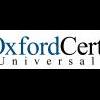Hi friends
I have confused with monitoring usage in these two standards. I think in 22000 the monitoring activities are measurements of process and inputs and verification is measurement the ouputs.
Hi Amir,
Verification is the provision of evidence that requirements have been fulfilled.
Here are the references to monitoring in the 2 standards:
ISO 9001:2008
4
Quality management system
4.1 General requirements
d) ensure the availability of resources and information necessary to support the monitoring of processes
e) monitor these processes
7 Product realization
7.1 Planning of product realization
c) required monitoring activities specific to the product and the criteria for product acceptance
7.5 Production and service provision
7.5.1 Control of production and service provision
d) use of monitoring and measuring equipment
e) the implementation of monitoring
7.5.2 Validation of processes for production and service provision
The organization shall validate any processes for production and service provision where the resulting output cannot be verified by subsequent monitoring or measurement
7.5.3 Identification and
traceabilityIdentify the product status with respect to monitoring and measurement requirements
7.6 Control of monitoring and measuring equipment
8 Measurement, analysis and improvement
8.1 General - plan and implement the monitoring processes needed
8.2 Monitoring and measurement
8.2.1 Customer satisfaction - monitoring customer perception
8.2.2 Internal audit - conduct internal audits at planned intervals
8.2.3 Monitoring and measurement of processes
The organization shall apply suitable methods for monitoring and, where applicable, measurement of the
quality management system processes. Consider the type and extent of monitoring or measurement
8.2.4 Monitoring and measurement of product - monitor and measure the characteristics of the product to verify that product requirements have been met.
8.4 Analysis of data - include data generated as a result of monitoring and measurement and from other relevant sources
ISO 22000:2005
6.2.2 Competence, awareness and training
c)ensure that personnel responsible for monitoring of the
food safety management system are trained
7.4.4 Selection and assessment of control measures
b) feasibility for monitoring - ability to be monitored in a timely manner to enable immediate. corrections
7.5 Establishing the operational prerequisite programmes (PRPs)
c)monitoring procedures that demonstrate that the operational PRPs are implemented
f)record(s) of monitoring
7.6 Establishing the
HACCP plan
7.6.1
HACCP plan
d)monitoring procedure(s) (see 7.6.4)
g)record(s) of monitoring
7.6.3 Determination of critical limits for
critical control pointsCritical limits shall be determined for the monitoring established for each
CCP.
7.6.4 System for the monitoring of
critical control pointsA monitoring system shall be established for each
CCP to demonstrate that the
CCP is in control.
The monitoring system consisting of relevant procedures, instructions and records including:
- measurements or observations
- monitoring devices
- applicable calibration methods
- monitoring frequency
- responsibility and authority
- record requirements and methods.
The monitoring methods and frequency shall be capable of determining when the critical limits have been exceeded in time for the product to be isolated before it is used or consumed.
7.6.5 Actions when monitoring results exceed critical limits
Planned corrections and corrective actions to be taken when critical limits are exceeded shall be specified in the
HACCP plan.
7.10.2 Corrective actions
The organization shall establish and maintain documented procedures that specify appropriate actions:
b)reviewing trends in monitoring results
7.10.3.2 Evaluation for release
Each lot of product affected by the nonconformity shall only be released:
a) when evidence other than the monitoring system demonstrates that the control measures have been effective
8.3 Control of monitoring and measuring
Provide evidence that the specified monitoring and measuring methods and equipment are adequate to ensure the performance of the monitoring and measuring procedures.
The ability of computer software to satisfy the intended application shall be confirmed when used in the monitoring and measurement.
There is a table at the back of the 22000 standard that correlates the two standards.
This document correlates BRC, 9001, 22000 and PAS220 and may be useful to you.
 BRC_9001_22000_PAS_220_Requirements.pdf 491.68KB
216 downloads
BRC_9001_22000_PAS_220_Requirements.pdf 491.68KB
216 downloadsISO 22000 Definitions:
Monitoring - Conducting a planned sequence of observations or measurements to assess whether control measures are operating as intended
Verification - Confirmation through the provision of objective evidence, that specified requirements have been fulfilled
Regards,
Tony
























